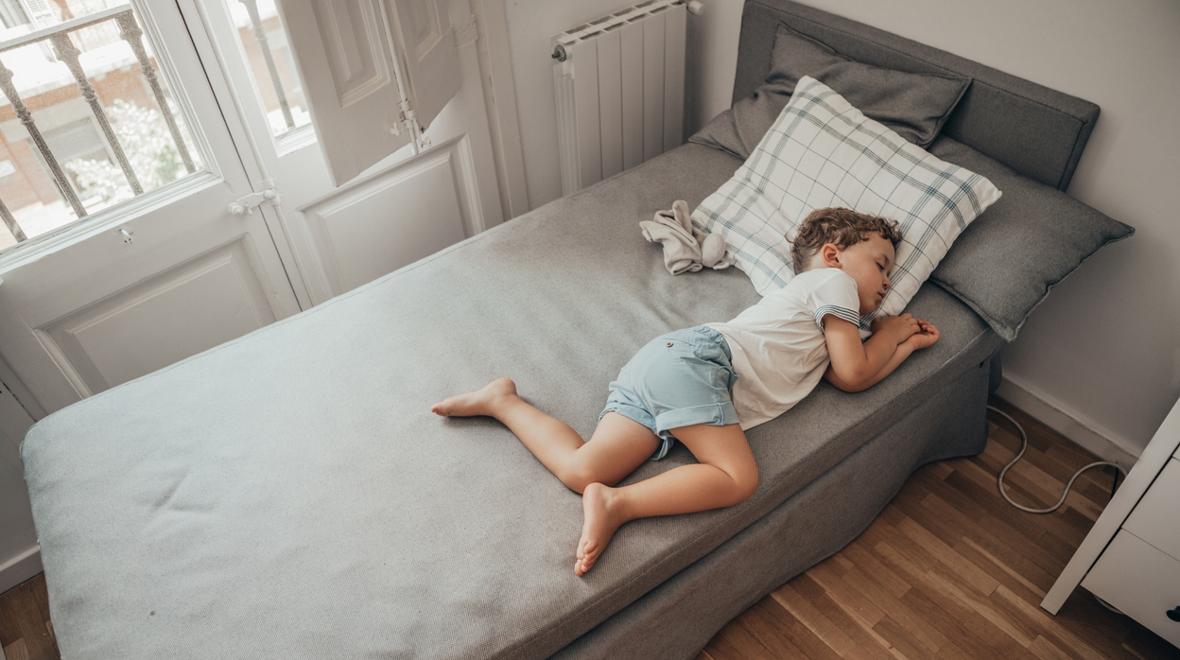
Photo:
iStock
While summer in the Northwest can be magical, it can get pretty toasty inside my hundred-year-old house. Without air conditioning, sometimes the mercury stays much higher than I’d like at night. These warm night sometimes resulted in sleep strikes from my kids — fighting bedtime, snoozing fitfully and waking several times a night parched, miserable and complaining of bad dreams. While sunny summer skies are great for daytime play, there’s nothing fun about a too-hot bedroom at night.
Warm temperatures can seriously harm nighttime sleep by disrupting the body’s natural sleep cycle, says Robert S. Rosenberg, D.O., medical director of the Sleep Disorders Centers of Prescott Valley and Flagstaff, Arizona. Body temperature is an important component of healthy sleep, he notes. “As we fall asleep, our core body temperature drops to initiate sleep. During REM sleep, we lose the ability to regulate our temperature. So a warm room may be especially disruptive during REM sleep.”
The ideal room temperature for sleep is between 65 and 68 degrees, says Rosenberg. When the temperature creeps higher, expect sleep problems such as trouble falling and staying asleep, restlessness and irritability. Sleeping in a room that’s too hot is a common cause of night awakenings and nightmares, and some studies link warm sleep environments to an increased risk of Sudden Infant Death Syndrome.
So, when it comes to kid’s bedrooms, cool rules. Here’s some expert tips for helping kids’ sleep when it's hot.
Cool zone
Zoned temperature control with a thermostat in each bedroom is ideal, says Rosenberg. But there’s no need to revamp your entire heating and cooling system. Keep a small digital room thermometer on your child’s shelf or dresser; some are especially designed for this purpose and change color when the room is too hot.
Crisp and cool
Ditch soft, fuzzy sleep surfaces. Opt for simple cotton sheets to keep things cool. Fleece sheets, flannel sheets and sheepskins trap heat, which can lead to an uncomfortably warm sleep environment.
Night light
A room that’s darker stays cooler. To keep the sun’s rays from turning your child’s room into a sauna, keep the curtains closed when no one’s in the room, and invest in light-blocking blackout curtains.
Turndown service
Heaps of blankets are unnecessary and potentially unsafe for little ones; the American Academy of Pediatrics recommends against loose blankets for babies. If your toddler or child likes to fall asleep under a blanket, sneak into the bedroom to turn down the heavy blanket before you go to sleep.
Fan-tastic
Ceiling fans are an inexpensive way to promote better sleep, keeping a room 15 to 20 degrees cooler. They can also promote safer sleep, because bedroom fans have been associated with a reduced risk of SIDS, says Wendy Sue Swanson, M.D. A few hours before bedtime, use fans to blow warm air out of the room, and consider keeping a fan circulating at night.
Bunk up
Warm air naturally rises, so the top bunk in a bunk bed is often overly warm. Blast hot air away with a box fan placed on top of a dresser or high bookshelf. In some cases, a fan may not help enough, and the top bunk may stay too hot for comfortable sleep. On especially hot nights, a top bunkee may need to temporarily relocate to a cooler sleeping space — even the floor (kids love indoor campouts!).
Cooler heads prevail
A dip in the tub after dinner can make for a better bedtime (if kids are outside all day during the summer, they probably need the scrub-down, anyway). Don’t skip washing their hair; a damp, cool head may actually help your child sleep — according to the American Academy of Sleep Medicine, cooling the brain is an effective treatment for insomnia.
Pajama-rama
Give pajama drawers a warm-weather makeover and stash fleece footie PJs away. Summer sleepwear should be lightweight and breathable; think cotton tanks, tees and shorts. Babies who are swaddled can go pajama-less during the summer with just a diaper under the swaddle.
Frozen
Stash a tumbler or sippy cup full of ice water on your child’s nightstand for middle-of-the-night sipping. For an icy treat, store pillowcases in the freezer and slip a fresh, cold cover on your child’s pillow at bedtime.
Back yard campout
If you have a back yard, consider sleeping outside. Kids will love the adventure, and it is often much cooler outside. Even if the weather is too hot for a campfire (or there is a burn ban) you can up the fun factor by playing some campfire games.

Take note: A child who is too hot at night may not say that they are too hot. Instead, they may awaken in the middle of the night confused, upset or thirsty. That’s why it’s important to monitor bedroom temperature and take steps to keep things cool, says Swanson. A little room-cooling prep work can help children sleep more soundly, so they’ll be rested and ready for all summer has in store.
Editor's Note: This story was originally published in July 2020 and was updated most recently in 2024 by associate editor Kari Hanson. This article contains affiliate links. If you purchase products through links on our site, ParentMap may earn an affiliate commission.











